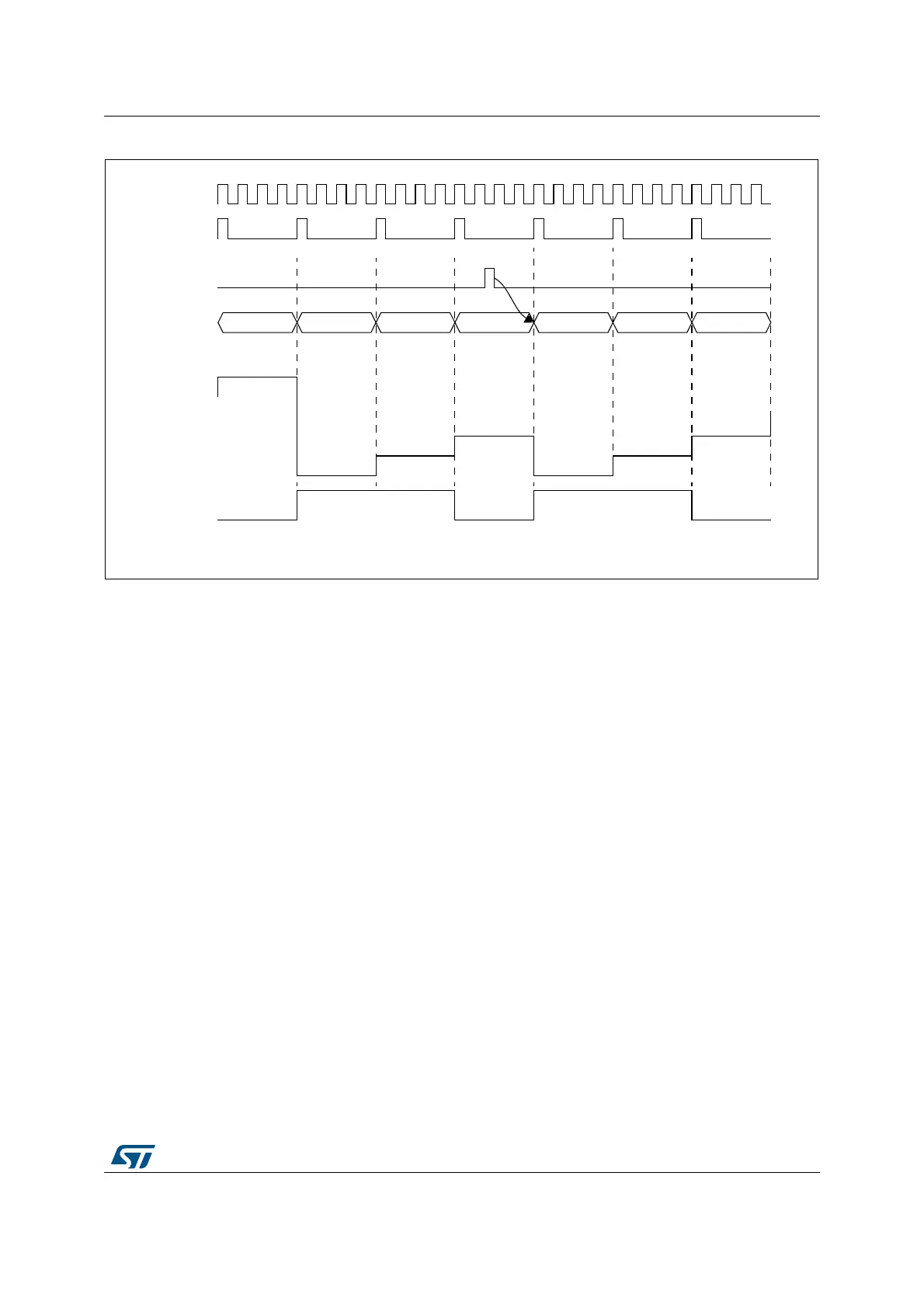RM0440 Rev 4 859/2126
RM0440 High-resolution timer (HRTIM)
1083
Figure 187. Timer reset resynchronization (prescaling ratio above 32)
Repetition counter
A common software practice is to have an interrupt generated when the period value is
reached, so that the maximum amount of time is left for processing before the next period
begins. The main purpose of the repetition counter is to adjust the period interrupt rate and
off-load the CPU by decoupling the switching frequency and the interrupt frequency.
The timing units have a repetition counter. This counter cannot be read, but solely
programmed with an auto-reload value in the HRTIM_REPxR register.
The repetition counter is initialized with the content of the HRTIM_REPxR register when the
timer is enabled (TXCEN bit set). Once the timer has been enabled, any time the counter is
cleared, either due to a reset event or due to a counter roll-over, the repetition counter is
decreased. When it reaches zero, a REP interrupt or a DMA request is issued if enabled
(REPIE and REPDE bits in the HRTIM_DIER register).
If the HRTIM_REPxR register is set to 0, an interrupt is generated for each and every
period. For any value above 0, a REP interrupt is generated after (HRTIM_REPxR + 1)
periods. Figure 188 presents the repetition counter operation for various values, in
continuous mode.
MS32261V2
5
0
1
1
2
Prescaled clock
Reset event
Counter
Counter
(PER = 5)
f
HRTIM
HRTIM_CHA1
HRTIM_CHA1: Set on Timer A reset event, Reset on Compare 1 = 2

